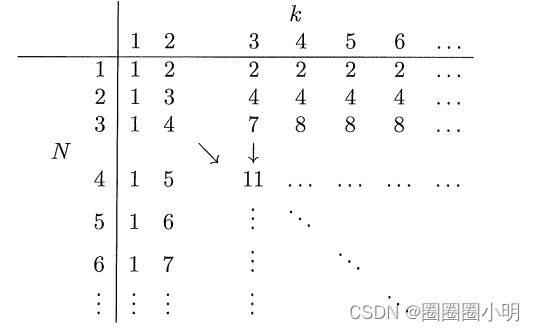- 【论文复现】——基于SIFT特征点结合ICP的点云配准方法
点云侠
点云配准专题开发语言计算机视觉算法3dc++
目录一、论文概述二、代码实现三、结果展示1、初始位置2、配准结果四、实验心得一、论文概述 在点云配准过程中,针对迭代最近点(ICP)算法对点云初始位置依赖性强且迭代速度慢的问题,提出一种基于尺度不变特征变换(SIFT)特征点结合ICP的点云配准方法。首先利用SIFT算法提取待配准点云和目标点云的特征点;接着计算出特征点的快速点特征直方图(FPFH)特征;然后依据该特征使用采样一致性初始配准(SA
- 数字签名与数字证书
TABE_
计算机网络数字签名数字证书
这里写目录标题数字签名数字证书数字证书的原理数字证书的特点如何验证证书机构的公钥不是伪造的数字签名数字签名是非对称密钥加密技术与数字摘要技术的应用,数字签名就是用加密算法加密报文文本的摘要(摘要通过hash函数得到)而生成的内容。发送报文时,发送方用一个哈希函数从报文文本中生成报文摘要,然后用发送方的私钥对这个摘要进行加密生成数字签名,之后将数字签名和报文一起发送给接收方,即数字证书。接收方首先用
- 零基础入门机器学习:用Scikit-learn实现鸢尾花分类
藍海琴泉
机器学习scikit-learn分类
适合人群:机器学习新手|数据分析爱好者|需快速展示案例的学生一、引言:为什么要学这个案例?目的:明确机器学习解决什么问题,建立学习信心。机器学习定义:让计算机从数据中自动学习规律(如分类鸢尾花品种)。为什么选鸢尾花数据集:数据量小、特征明确,适合教学演示。Scikit-learn优势:提供现成算法和工具,无需从头写数学公式。二、环境准备:5分钟快速上手目的:搭建可运行的代码环境,避免卡在工具安装环
- 访问者模式
烟沙九洲
设计模式访问者模式java
访问者(Visitor)模式属于行为型模式的一种。访问者模式主要用于分离算法和对象结构,从而在不修改原有对象的情况下扩展新的操作。它适用于数据结构相对稳定,而操作(行为)容易变化的场景。访问者模式允许在不修改现有类的情况下,为类层次结构中的对象定义新的操作。访问者模式通过将操作封装到一个独立的类(即访问者)中,使得对象结构与操作解耦。访问者模式使用了一种名为双分派(在运行时根据两个对象的类型动态选
- 机器学习--DBSCAN聚类算法详解
2201_75491841
机器学习算法聚类人工智能
目录引言1.什么是DBSCAN聚类?2.DBSCAN聚类算法的原理3.DBSCAN算法的核心概念3.1邻域(Neighborhood)3.2核心点(CorePoint)3.3直接密度可达(DirectlyDensity-Reachable)3.4密度可达(Density-Reachable)3.5密度相连(Density-Connected)4.DBSCAN算法的步骤5.DBSCAN算法的优缺点5
- 软考 中级软件设计师 考点知识点笔记总结 day06
莫问alicia
软考中级软件设计师笔记数据结构算法
文章目录6、树和二叉树6.1、树的基本概念6.2、二叉树的基本概念6.3、二叉树的遍历6.4、查找二叉树(二叉排序树)BST6.5、构造霍夫曼树+6.6、线索二叉树6.7、平衡二叉树7、图7.1、存储结构-邻接矩阵7.2、存储结构-邻接表7.3、图的遍历7.4、拓扑排序7.5、最小生成树普利姆算法7.6、克鲁斯卡尔算法6、树和二叉树6.1、树的基本概念结点的度:一个结点的度是指该结点拥有的子树数量
- 【机器学习】机器学习工程实战-第3章 数据收集和准备
腊肉芥末果
机器学习工程实战机器学习人工智能
上一章:第2章项目开始前文章目录3.1关于数据的问题3.1.1数据是否可获得3.1.2数据是否相当大3.1.3数据是否可用3.1.4数据是否可理解3.1.5数据是否可靠3.2数据的常见问题3.2.1高成本3.2.2质量差3.2.3噪声(noise)3.2.4偏差(bias)3.2.5预测能力低(lowpredictivepower)3.2.6过时的样本3.2.7离群值3.2.8数据泄露/目标泄漏3
- 机器学习实战 第一章 机器学习基础
LuoY、
MachineLearning机器学习算法人工智能
第一章机器学习1.1何谓机器学习1.2关键术语1.3机器学习的主要任务1.4如何选择合适的算法1.5开发机器学习应用程序的步骤1.6Python语言的优势1.1何谓机器学习 1、简单地说,机器学习就是把无序的数据转换成有用的信息; 2、机器学习能让我们自数据集中受启发,我们会利用计算机来彰显数据背后的真实含义; 3、机器学习横跨计算机科学、工程技术和统计学等多个学科,需要多学科的
- 数据挖掘实战-基于机器学习的垃圾邮件检测模型
艾派森
数据挖掘实战合集数据挖掘机器学习人工智能python
♂️个人主页:@艾派森的个人主页✍作者简介:Python学习者希望大家多多支持,我们一起进步!如果文章对你有帮助的话,欢迎评论点赞收藏加关注+目录1.项目背景2.数据集介绍
- 集成学习(随机森林)
herry57
数学建模大数据随机森林集成学习
目录一、集成学习概念二、Bagging集成原理三、随机森林四、例子(商品分类)一、集成学习概念集成学习通过建⽴⼏个模型来解决单⼀预测问题。它的⼯作原理是⽣成多个分类器/模型,各⾃独⽴地学习和作出预测。这些预测最后结合成组合预测,因此优于任何⼀个单分类的做出预测。只要单分类器的表现不太差,集成学习的结果总是要好于单分类器的二、Bagging集成原理分类圆形和长方形三、随机森林在机器学习中,随机森林是
- HTML实现酷炫3D相册
算法与编程之美
编程之美csshtmljscss3javascript
欢迎点击「算法与编程之美」↑关注我们!本文首发于微信公众号:"算法与编程之美",欢迎关注,及时了解更多此系列文章。欢迎加入团队圈子!与作者面对面!直接点击!目录1、创建文件目录2、调背景色3、制作3D相册4、将图片散开,围成一圈。5、绘制透明底盘6、最终效果1、创建文件目录在Hbuilder在新建一个目录,创建css和js文件。图12、调背景色在style块里面给整个页面渲染成黑色调。*{padd
- 【机器学习】朴素贝叶斯入门:从零到垃圾邮件过滤实战
吴师兄大模型
0基础实现机器学习入门到精通机器学习人工智能朴素贝叶斯深度学习pytorchsklearn开发语言
Langchain系列文章目录01-玩转LangChain:从模型调用到Prompt模板与输出解析的完整指南02-玩转LangChainMemory模块:四种记忆类型详解及应用场景全覆盖03-全面掌握LangChain:从核心链条构建到动态任务分配的实战指南04-玩转LangChain:从文档加载到高效问答系统构建的全程实战05-玩转LangChain:深度评估问答系统的三种高效方法(示例生成、手
- 【机器学习】机器学习工程实战-第2章 项目开始前
腊肉芥末果
机器学习工程实战机器学习人工智能
上一章:第1章概述文章目录2.1机器学习项目的优先级排序2.1.1机器学习的影响2.1.2机器学习的成本2.2估计机器学习项目的复杂度2.2.1未知因素2.2.2简化问题2.2.3非线性进展2.3确定机器学习项目的目标2.3.1模型能做什么2.3.2成功模型的属性2.4构建机器学习团队2.4.1两种文化2.4.2机器学习团队的成员2.5机器学习项目为何失败2.5.1缺乏有经验的人才2.5.2缺乏领
- 蓝桥杯备赛计划
laitywgx
蓝桥杯职场和发展
1-2小时的蓝桥杯PythonB组冲刺日程表(持续1个月,聚焦高频考点):第一周:核心算法突破Day1(周一)学习重点:动态规划(01背包问题)学习资源:AcWing《蓝桥杯辅导课》第8讲(背包问题模板)代码模板速记:#一维01背包模板n,V=map(int,input().split())dp=[0]*(V+1)for_inrange(n):w,v=map(int,input().split()
- 机器学习怎么做特征工程
全栈你个大西瓜
人工智能机器学习人工智能特征工程数据预处理特征变换特征降维特征构造
一、特征工程通俗解释特征工程就像厨师做菜前的食材处理:原始数据是“生肉和蔬菜”,特征工程是“切块、腌制、调料搭配”,目的是让机器学习模型(食客)更容易消化吸收,做出更好预测(品尝美味)。二、为什么要做特征工程?数据质量差:原始数据常有缺失、噪声、不一致问题(如年龄列混入“未知”)。模型限制:算法无法直接理解原始数据(如文本、日期需要数值化)。提升效果:好特征能显著提升模型性能(准确率提升10%~5
- 【机器学习】机器学习四大分类
藓类少女
机器学习机器学习分类人工智能
机器学习的方法主要可以分为四大类,根据学习方式和数据标注情况进行分类:1.监督学习(SupervisedLearning)特点:有标注数据(即训练数据有明确的输入(X)和输出(Y))。学习目标是找到一个映射(f(X)\approxY)。适用于分类和回归问题。主要算法:分类(Classification):逻辑回归(LogisticRegression)支持向量机(SVM)朴素贝叶斯(NaïveBa
- 大模型学习终极指南:从新手到专家的必经之路,全网最详尽解析,你敢挑战吗?
大模型入门教程
学习人工智能AI大模型大模型学习大模型教程AI大模型
随着人工智能技术的飞速发展,大模型(Large-ScaleModels)已经成为推动自然语言处理(NLP)、计算机视觉(CV)等领域进步的关键因素。本文将为您详细介绍从零开始学习大模型直至成为专家的全过程,包括所需掌握的知识点、学习资源以及实践建议等。无论您是初学者还是有一定基础的专业人士,都能从中获得有价值的指导。一、基础知识准备在开始学习大模型之前,需要先掌握一些基础知识,这些知识将为后续的学
- 机器学习——KNN超参数
练习AI两年半
机器学习人工智能深度学习
sklearn.model_selection.GridSearchCV是scikit-learn中用于超参数调优的核心工具,通过结合交叉验证和网格搜索实现模型参数的自动化优化。以下是详细介绍:一、功能概述GridSearchCV在指定参数网格上穷举所有可能的超参数组合,通过交叉验证评估每组参数的性能,最终选择最优参数组合。其核心价值在于:自动化调参:替代手动参数调试,提升效率3。交叉验证支持:通
- 编程内容简述!
恶霸不委屈
开发语言青少年编程汇编javapython
编程是指通过计算机语言来开发软件、程序和应用的过程,通常通过编写一系列的指令,来让计算机完成特定的任务。编程可以涉及多个领域和技术,以下是一些主要的编程内容:1.编程语言编程语言是程序员与计算机进行沟通的桥梁,不同的编程语言适用于不同的任务。常见的编程语言有:Python:简单易学,适用于数据分析、人工智能、网页开发等。JavaScript:网页开发中不可或缺的语言,用于动态网页和前端开发。Jav
- 高频交易:当速度与智慧在金融市场中“飙车”(策略+算法)
西蒙斯.果
pythonnumpypandas
高频交易:当速度与智慧在金融市场中“飙车”高频交易(High-FrequencyTrading,HFT)就像金融市场的“闪电侠”,利用强大的计算机和复杂的算法,在毫秒甚至微秒内完成交易。它的目标是抓住市场中的微小机会,赚取“快钱”。以下是对高频交易策略和算法的详细介绍,带点幽默感,让你在了解金融科技的同时也能会心一笑。---一、高频交易策略:金融市场的“快闪族”1\.做市策略:买卖价差的“中间商”
- 大模型Agent 和 RAG 的关系
大数据追光猿
大模型语言模型人工智能学习方法transformer
Agent和RAG(Retrieval-AugmentedGeneration)是两种在自然语言处理(NLP)和人工智能领域中广泛使用的技术,它们在功能、目标和实现方式上既有区别又有联系。以下是它们的关系及其协同作用的详细分析。1.Agent和RAG的定义(1)Agent定义:Agent是一种智能体,能够感知环境并采取行动以完成特定任务。在NLP领域,Agent通常指一个基于大语言模型(LLM)的
- 国产模型能否挑战 GPT-4?一文拆解 DeepSeek-V3 架构与实战应用
AI筑梦师
人工智能学习框架架构深度学习pythonagi人工智能tensorflow
✳️一、引言✅1.1DeepSeek-V3发布背景与定位随着大模型技术的快速演进,从GPT-3到GPT-4,全球在通用人工智能方向取得了长足进展。但与此同时,开源社区始终缺乏一个真正兼顾性能、效率、中文能力和实用性的高质量大模型。DeepSeek-V3的推出正是在这个背景下的一次关键突破。DeepSeek-V3是由中国团队DeepSeek开发的第三代大语言模型,它具备以下几个核心特性:开源可商用:
- Github上神仙级大模型项目:大语言模型(LLM)入门学习路线图,三个月让你从大模型基础到精通!
AI大模型-大飞
github语言模型学习人工智能AI大模型程序员AI
Github项目上有一个大语言模型学习路线笔记,它全面涵盖了大语言模型的所需的基础知识学习,LLM前沿算法和架构,以及如何将大语言模型进行工程化实践。这份资料是初学者或有一定基础的开发/算法人员入门活深入大型语言模型学习的优秀参考。这份资料重点介绍了我们应该掌握哪些核心知识,并推荐了一系列优质的学习视频和博客,旨在帮助大家系统性地掌握大型语言模型的相关技术。大语言模型(LargeLanguageM
- Agent、RAG、LangChain的概念及作用
北极冰雨
大模型人工智能
Agent:概念:在人工智能中,Agent通常指的是能够执行任务或做出决策的实体,可以是简单的程序,也可以是复杂的系统,如自动化客服助手、推荐系统等,甚至可以是软件代理、机器人或虚拟助手等各种形式。作用:它能利用内置的大语言模型来做出规划,决定执行哪些步骤,以及每个步骤需要调用哪些工具(如RAG),之后调用相应的工具,最终完成任务。例如,在客服问答场景中,Agent可以根据用户的问题,规划出需要查
- AtCoder备赛冲刺必刷题(C++) | 洛谷 AT_abc396_a Triple Four
热爱编程的通信人
c++算法开发语言
本文分享的必刷题目是从蓝桥云课、洛谷、AcWing等知名刷题平台精心挑选而来,并结合各平台提供的算法标签和难度等级进行了系统分类。题目涵盖了从基础到进阶的多种算法和数据结构,旨在为不同阶段的编程学习者提供一条清晰、平稳的学习提升路径。欢迎大家订阅我的专栏:算法题解:C++与Python实现!附上汇总贴:算法竞赛备考冲刺必刷题(C++)|汇总【题目来源】洛谷:AT_abc396_a[ABC396A]
- 算法及数据结构系列 - 滑动窗口
诺亚凹凸曼
算法及数据结构算法数据结构java
系列文章目录算法及数据结构系列-二分查找算法及数据结构系列-BFS算法算法及数据结构系列-动态规划算法及数据结构系列-双指针算法及数据结构系列-回溯算法算法及数据结构系列-树文章目录滑动窗口框架思路经典题型76.最小覆盖子串567.字符串的排列438.找到字符串中所有字母异位词3.无重复字符的最长子串滑动窗口框架思路/*滑动窗口算法框架*/voidslidingWindow(strings,str
- QHDBO基于量子计算和多策略融合的蜣螂优化算法
算法小狂人
算法改进智能优化算法量子计算算法
2.DBO基本的蜣螂算法通过模拟蜣螂在自然界中的四种行为(滚动、产卵、觅食和偷窃)来执行种群位置更新。2.1滚动蜣螂在自然界中,蜣螂必须通过太阳导航,使其球滚动的路线尽可能直线。方程(1)用于原始论文中更新滚动蜣螂的位置:xi(t+1)=xi(t)+α⋅k⋅xi(t−1)+b⋅Δx(1)x_i(t+1)=x_i(t)+\alpha\cdotk\cdotx_i(t-1)+b\cdot\Deltax\
- H800能效架构实战解析
智能计算研究中心
其他
内容概要H800能效架构以异构计算资源调度与动态功耗控制为核心,通过系统级协同设计实现算力密度与能耗优化的双重目标。其核心技术覆盖智能负载分配、电压频率动态调节及热管理三大模块,形成从芯片级到数据中心级的垂直优化链路。在架构设计中,异构资源调度算法通过实时分析任务特征与硬件状态,动态分配CPU、GPU及专用加速器资源,最大化硬件利用率;动态功耗模块则基于负载波动自适应调整供电策略,结合多级电压频率
- 模型优化驱动产业应用创新
智能计算研究中心
其他
内容概要当前模型优化技术的迭代正沿着多维路径快速演进,其核心驱动力在于突破算法性能与产业需求间的适配瓶颈。以自适应学习机制与迁移学习框架为基础的优化策略,显著提升了模型在跨场景应用中的泛化能力,而超参数自动调优技术则通过PyTorch、TensorFlow等主流框架的接口标准化,降低了复杂模型的开发门槛。在部署层面,边缘计算与联邦学习的协同应用不仅缩短了金融预测、医疗影像分析等场景的响应延迟,更通
- DeepSeek多语言AI高效应用实践
智能计算研究中心
其他
内容概要在人工智能技术快速迭代的背景下,DeepSeek系列模型凭借混合专家架构(MoE)与670亿参数规模,在多语言处理、视觉语言理解及复杂任务生成领域实现了突破性进展。本文系统性拆解其技术架构设计逻辑,聚焦论文写作、代码生成、SEO关键词拓展三大核心场景,分析模型在高生成质量、低使用成本维度的差异化优势。技术维度DeepSeekProver传统单模态模型多语言支持97种语言动态切换单一语种优化
- jsonp 常用util方法
hw1287789687
jsonpjsonp常用方法jsonp callback
jsonp 常用java方法
(1)以jsonp的形式返回:函数名(json字符串)
/***
* 用于jsonp调用
* @param map : 用于构造json数据
* @param callback : 回调的javascript方法名
* @param filters : <code>SimpleBeanPropertyFilter theFilt
- 多线程场景
alafqq
多线程
0
能不能简单描述一下你在java web开发中需要用到多线程编程的场景?0
对多线程有些了解,但是不太清楚具体的应用场景,能简单说一下你遇到的多线程编程的场景吗?
Java多线程
2012年11月23日 15:41 Young9007 Young9007
4
0 0 4
Comment添加评论关注(2)
3个答案 按时间排序 按投票排序
0
0
最典型的如:
1、
- Maven学习——修改Maven的本地仓库路径
Kai_Ge
maven
安装Maven后我们会在用户目录下发现.m2 文件夹。默认情况下,该文件夹下放置了Maven本地仓库.m2/repository。所有的Maven构件(artifact)都被存储到该仓库中,以方便重用。但是windows用户的操作系统都安装在C盘,把Maven仓库放到C盘是很危险的,为此我们需要修改Maven的本地仓库路径。
- placeholder的浏览器兼容
120153216
placeholder
【前言】
自从html5引入placeholder后,问题就来了,
不支持html5的浏览器也先有这样的效果,
各种兼容,之前考虑,今天测试人员逮住不放,
想了个解决办法,看样子还行,记录一下。
【原理】
不使用placeholder,而是模拟placeholder的效果,
大概就是用focus和focusout效果。
【代码】
<scrip
- debian_用iso文件创建本地apt源
2002wmj
Debian
1.将N个debian-506-amd64-DVD-N.iso存放于本地或其他媒介内,本例是放在本机/iso/目录下
2.创建N个挂载点目录
如下:
debian:~#mkdir –r /media/dvd1
debian:~#mkdir –r /media/dvd2
debian:~#mkdir –r /media/dvd3
….
debian:~#mkdir –r /media
- SQLSERVER耗时最长的SQL
357029540
SQL Server
对于DBA来说,经常要知道存储过程的某些信息:
1. 执行了多少次
2. 执行的执行计划如何
3. 执行的平均读写如何
4. 执行平均需要多少时间
列名 &
- com/genuitec/eclipse/j2eedt/core/J2EEProjectUtil
7454103
eclipse
今天eclipse突然报了com/genuitec/eclipse/j2eedt/core/J2EEProjectUtil 错误,并且工程文件打不开了,在网上找了一下资料,然后按照方法操作了一遍,好了,解决方法如下:
错误提示信息:
An error has occurred.See error log for more details.
Reason:
com/genuitec/
- 用正则删除文本中的html标签
adminjun
javahtml正则表达式去掉html标签
使用文本编辑器录入文章存入数据中的文本是HTML标签格式,由于业务需要对HTML标签进行去除只保留纯净的文本内容,于是乎Java实现自动过滤。
如下:
public static String Html2Text(String inputString) {
String htmlStr = inputString; // 含html标签的字符串
String textSt
- 嵌入式系统设计中常用总线和接口
aijuans
linux 基础
嵌入式系统设计中常用总线和接口
任何一个微处理器都要与一定数量的部件和外围设备连接,但如果将各部件和每一种外围设备都分别用一组线路与CPU直接连接,那么连线
- Java函数调用方式——按值传递
ayaoxinchao
java按值传递对象基础数据类型
Java使用按值传递的函数调用方式,这往往使我感到迷惑。因为在基础数据类型和对象的传递上,我就会纠结于到底是按值传递,还是按引用传递。其实经过学习,Java在任何地方,都一直发挥着按值传递的本色。
首先,让我们看一看基础数据类型是如何按值传递的。
public static void main(String[] args) {
int a = 2;
- ios音量线性下降
bewithme
ios音量
直接上代码吧
//second 几秒内下降为0
- (void)reduceVolume:(int)second {
KGVoicePlayer *player = [KGVoicePlayer defaultPlayer];
if (!_flag) {
_tempVolume = player.volume;
- 与其怨它不如爱它
bijian1013
选择理想职业规划
抱怨工作是年轻人的常态,但爱工作才是积极的心态,与其怨它不如爱它。
一般来说,在公司干了一两年后,不少年轻人容易产生怨言,除了具体的埋怨公司“扭门”,埋怨上司无能以外,也有许多人是因为根本不爱自已的那份工作,工作完全成了谋生的手段,跟自已的性格、专业、爱好都相差甚远。
- 一边时间不够用一边浪费时间
bingyingao
工作时间浪费
一方面感觉时间严重不够用,另一方面又在不停的浪费时间。
每一个周末,晚上熬夜看电影到凌晨一点,早上起不来一直睡到10点钟,10点钟起床,吃饭后玩手机到下午一点。
精神还是很差,下午像一直野鬼在城市里晃荡。
为何不尝试晚上10点钟就睡,早上7点就起,时间完全是一样的,把看电影的时间换到早上,精神好,气色好,一天好状态。
控制让自己周末早睡早起,你就成功了一半。
有多少个工作
- 【Scala八】Scala核心二:隐式转换
bit1129
scala
Implicits work like this: if you call a method on a Scala object, and the Scala compiler does not see a definition for that method in the class definition for that object, the compiler will try to con
- sudoku slover in Haskell (2)
bookjovi
haskellsudoku
继续精简haskell版的sudoku程序,稍微改了一下,这次用了8行,同时性能也提高了很多,对每个空格的所有解不是通过尝试算出来的,而是直接得出。
board = [0,3,4,1,7,0,5,0,0,
0,6,0,0,0,8,3,0,1,
7,0,0,3,0,0,0,0,6,
5,0,0,6,4,0,8,0,7,
- Java-Collections Framework学习与总结-HashSet和LinkedHashSet
BrokenDreams
linkedhashset
本篇总结一下两个常用的集合类HashSet和LinkedHashSet。
它们都实现了相同接口java.util.Set。Set表示一种元素无序且不可重复的集合;之前总结过的java.util.List表示一种元素可重复且有序
- 读《研磨设计模式》-代码笔记-备忘录模式-Memento
bylijinnan
java设计模式
声明: 本文只为方便我个人查阅和理解,详细的分析以及源代码请移步 原作者的博客http://chjavach.iteye.com/
import java.util.ArrayList;
import java.util.List;
/*
* 备忘录模式的功能是,在不破坏封装性的前提下,捕获一个对象的内部状态,并在对象之外保存这个状态,为以后的状态恢复作“备忘”
- 《RAW格式照片处理专业技法》笔记
cherishLC
PS
注意,这不是教程!仅记录楼主之前不太了解的
一、色彩(空间)管理
作者建议采用ProRGB(色域最广),但camera raw中设为ProRGB,而PS中则在ProRGB的基础上,将gamma值设为了1.8(更符合人眼)
注意:bridge、camera raw怎么设置显示、输出的颜色都是正确的(会读取文件内的颜色配置文件),但用PS输出jpg文件时,必须先用Edit->conv
- 使用 Git 下载 Spring 源码 编译 for Eclipse
crabdave
eclipse
使用 Git 下载 Spring 源码 编译 for Eclipse
1、安装gradle,下载 http://www.gradle.org/downloads
配置环境变量GRADLE_HOME,配置PATH %GRADLE_HOME%/bin,cmd,gradle -v
2、spring4 用jdk8 下载 https://jdk8.java.
- mysql连接拒绝问题
daizj
mysql登录权限
mysql中在其它机器连接mysql服务器时报错问题汇总
一、[running]
[email protected]:~$mysql -uroot -h 192.168.9.108 -p //带-p参数,在下一步进行密码输入
Enter password: //无字符串输入
ERROR 1045 (28000): Access
- Google Chrome 为何打压 H.264
dsjt
applehtml5chromeGoogle
Google 今天在 Chromium 官方博客宣布由于 H.264 编解码器并非开放标准,Chrome 将在几个月后正式停止对 H.264 视频解码的支持,全面采用开放的 WebM 和 Theora 格式。
Google 在博客上表示,自从 WebM 视频编解码器推出以后,在性能、厂商支持以及独立性方面已经取得了很大的进步,为了与 Chromium 现有支持的編解码器保持一致,Chrome
- yii 获取控制器名 和方法名
dcj3sjt126com
yiiframework
1. 获取控制器名
在控制器中获取控制器名: $name = $this->getId();
在视图中获取控制器名: $name = Yii::app()->controller->id;
2. 获取动作名
在控制器beforeAction()回调函数中获取动作名: $name =
- Android知识总结(二)
come_for_dream
android
明天要考试了,速速总结如下
1、Activity的启动模式
standard:每次调用Activity的时候都创建一个(可以有多个相同的实例,也允许多个相同Activity叠加。)
singleTop:可以有多个实例,但是不允许多个相同Activity叠加。即,如果Ac
- 高洛峰收徒第二期:寻找未来的“技术大牛” ——折腾一年,奖励20万元
gcq511120594
工作项目管理
高洛峰,兄弟连IT教育合伙人、猿代码创始人、PHP培训第一人、《细说PHP》作者、软件开发工程师、《IT峰播》主创人、PHP讲师的鼻祖!
首期现在的进程刚刚过半,徒弟们真的很棒,人品都没的说,团结互助,学习刻苦,工作认真积极,灵活上进。我几乎会把他们全部留下来,现在已有一多半安排了实际的工作,并取得了很好的成绩。等他们出徒之日,凭他们的能力一定能够拿到高薪,而且我还承诺过一个徒弟,当他拿到大学毕
- linux expect
heipark
expect
1. 创建、编辑文件go.sh
#!/usr/bin/expect
spawn sudo su admin
expect "*password*" { send "13456\r\n" }
interact
2. 设置权限
chmod u+x go.sh 3.
- Spring4.1新特性——静态资源处理增强
jinnianshilongnian
spring 4.1
目录
Spring4.1新特性——综述
Spring4.1新特性——Spring核心部分及其他
Spring4.1新特性——Spring缓存框架增强
Spring4.1新特性——异步调用和事件机制的异常处理
Spring4.1新特性——数据库集成测试脚本初始化
Spring4.1新特性——Spring MVC增强
Spring4.1新特性——页面自动化测试框架Spring MVC T
- idea ubuntuxia 乱码
liyonghui160com
1.首先需要在windows字体目录下或者其它地方找到simsun.ttf 这个 字体文件。
2.在ubuntu 下可以执行下面操作安装该字体:
sudo mkdir /usr/share/fonts/truetype/simsun
sudo cp simsun.ttf /usr/share/fonts/truetype/simsun
fc-cache -f -v
- 改良程序的11技巧
pda158
技巧
有很多理由都能说明为什么我们应该写出清晰、可读性好的程序。最重要的一点,程序你只写一次,但以后会无数次的阅读。当你第二天回头来看你的代码 时,你就要开始阅读它了。当你把代码拿给其他人看时,他必须阅读你的代码。因此,在编写时多花一点时间,你会在阅读它时节省大量的时间。
让我们看一些基本的编程技巧:
尽量保持方法简短
永远永远不要把同一个变量用于多个不同的
- 300个涵盖IT各方面的免费资源(下)——工作与学习篇
shoothao
创业免费资源学习课程远程工作
工作与生产效率:
A. 背景声音
Noisli:背景噪音与颜色生成器。
Noizio:环境声均衡器。
Defonic:世界上任何的声响都可混合成美丽的旋律。
Designers.mx:设计者为设计者所准备的播放列表。
Coffitivity:这里的声音就像咖啡馆里放的一样。
B. 避免注意力分散
Self Co
- 深入浅出RPC
uule
rpc
深入浅出RPC-浅出篇
深入浅出RPC-深入篇
RPC
Remote Procedure Call Protocol
远程过程调用协议
它是一种通过网络从远程计算机程序上请求服务,而不需要了解底层网络技术的协议。RPC协议假定某些传输协议的存在,如TCP或UDP,为通信程序之间携带信息数据。在OSI网络通信模型中,RPC跨越了传输层和应用层。RPC使得开发
![]() . If there existed such a subset,thentaking the corresponding set of dichotomies in
. If there existed such a subset,thentaking the corresponding set of dichotomies in ![]() and adding XN to the datapoints yields a subset of size k that is shattered,which we know cannot existin this table by definition of B(N,k). Therefore,
and adding XN to the datapoints yields a subset of size k that is shattered,which we know cannot existin this table by definition of B(N,k). Therefore,![]() 中的二分法捕获。如果存在这样一个子集,那么将
中的二分法捕获。如果存在这样一个子集,那么将![]() 中相应的二分法与xN添加到数据点中将产生一个大小为k的子集,它是被完全捕获的,但根据B(N, k)的定义,我们知道在这个表格中这种情况是不存在的。因此,我们得到了以下不等式:
中相应的二分法与xN添加到数据点中将产生一个大小为k的子集,它是被完全捕获的,但根据B(N, k)的定义,我们知道在这个表格中这种情况是不存在的。因此,我们得到了以下不等式: